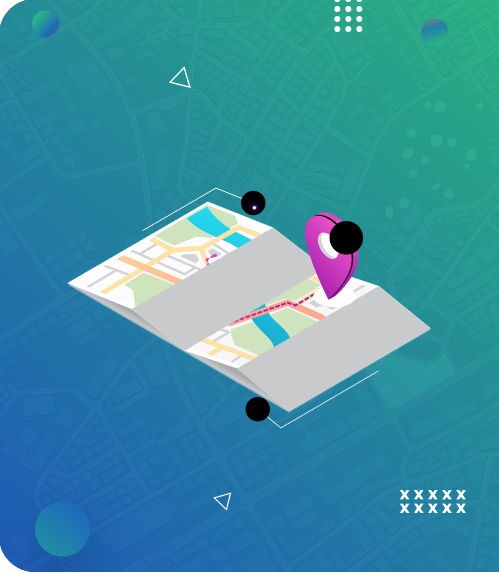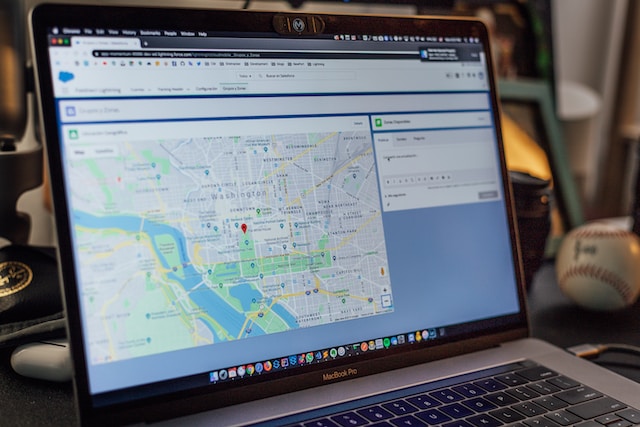The world we live in is big and diverse, and maps play an important role in assisting us to navigate and comprehend its complexity. Maps have developed from ancient times to the digital age to serve diverse functions and convey information. Understanding the different types of maps is essential for understanding the information each provides.
The range is extensive. For instance, geography maps focus on geographical location features. On the other hand, weather maps show current and forecast weather and climate conditions, and Nautical maps are useful in marine navigation.
By exploring these different types of maps, we can better understand how they aid in navigation, decision-making, and providing insights into our environment. In this article, we will examine the functions and applications of different map types. By uncovering their unique traits and functions, we’ll be able to appreciate maps’ relevance in our daily lives.
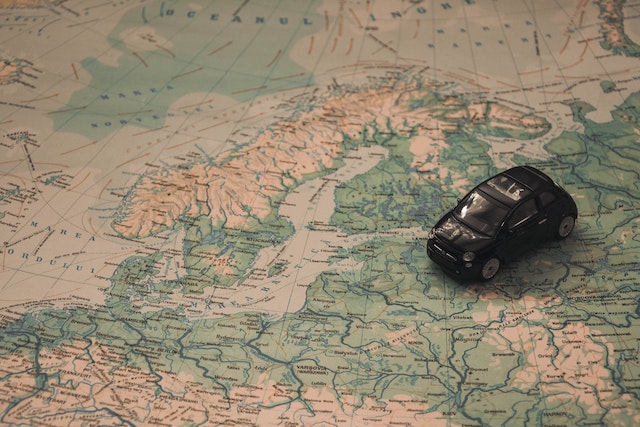
What Is a Map, and What Are the Different Types of Maps?
Maps are everywhere. They are in libraries, museums, offices, and even on our phones. Maps are dynamic tools that provide a clear picture of the earth and assist us in understanding the complexities of geography and spatial relationships.
They visually represent the earth’s surface, water, and weather components, allowing us to easily navigate, explore, and communicate. There are different types of maps, each with its unique features. Generally, we have three types of maps, namely geography maps, weather maps, and nautical charts.
Geography Types of Maps
Geography types of maps clearly show our world’s extensive wonders. These maps combine creativity and scientific precision to visually express the various elements and patterns that define our planet. They are dynamic tools that help us traverse, explore, and comprehend the Earth’s physical, cultural, and environmental environments. There are three major types of geography maps – thematic, reference, and topographic maps.
Thematic Maps
Thematic maps have a story-telling nature. These types of maps help uncover specific themes and patterns and communicate meaningful insights within spatial data. Thematic maps focus on specific topics or issues, making complex information visually accessible and easily understandable using colors, symbols, or patterns.
There are different types of thematic maps, and each has specific significance. They include Heat maps, Choropleth maps, and Dot maps, among others. Generally, thematic maps have immense benefits to individuals and organizations, some of which include the following:
- Spatial Analysis
Thematic maps are essential for studying spatial patterns and relationships. This map type aid in the identification of geographic concentrations, discrepancies in distribution, and hotspots of specific occurrences.
- Decision Making
These types of maps enhance decision-making by displaying data in an accessible and visually appealing style. For example, urban planners use thematic maps to identify potential places for infrastructure development based on demographic and socioeconomic characteristics.
- Marketing and Business Planning
Thematic maps can help firms target specific audiences by providing significant insights. Marketers may successfully identify target populations, design locations, and adapt advertising campaigns by combining demographic, consumer behavior, and purchasing power data.

Reference Maps
Reference maps are the most popular among the different types of maps. They allow us to explore the geographic information of earth. They are vital tools for navigating, exploring, and comprehending our surroundings. They give us a bird’s-eye view of the world and provide many geographical details. Here are some benefits of reference maps:
- Navigation and Orientation
Reference maps include vital information such as roads, landmarks, and geographic features. These maps range from simple road maps to global maps that aid us in foreign travel. They assist us in route planning, distance estimation, and ensuring we arrive at our destinations on time.
- Geographical Awareness
They help us grasp the world by visually portraying borders, continents, countries, and cities. They promote geographical literacy, allowing us to learn about different cultures, catch global links, and better understand our planet’s complexities.
- Planning and Development
These types of maps are vital in urban planning, infrastructure development, and land management. Planners and policymakers use these maps to assess the viability of locations for development projects. They also use them to examine demographic patterns and make informed judgments about resource allocation and zoning restrictions.
Topographic Maps
Topographic maps go beyond surface-level representations of the earth’s landscape to reveal terrains, curves, and elevations. The distinctive characteristic of a topographic map is the use of elevation contour lines to show the shape of the earth’s surface. These maps reveal the hidden dimensions of our world. As such, they are helpful for outdoor exploration, land management, and environmental planning.
Some of the uses of topographic maps include:
- Outdoor Exploration & Recreation
Hikers, climbers, and other outdoor enthusiasts rely on topographic maps to navigate and explore unknown territory. These maps enable adventurers to plan routes, estimate difficulty levels, and make educated judgments by depicting elevation changes, steep slopes, and significant landmarks.
- Geological and Environmental Studies
Geologists rely mainly on topographic maps to comprehend the earth’s geological formations, which include mountains and plateaus. These types of maps aid in identifying possible dangers, studying erosion patterns, and evaluating the impact of natural processes on landscapes.
- Water Resource Management
Topographic maps aid hydrologists and water engineers in delineating watersheds. They also help in mapping river networks and the assessment of flood-prone locations.
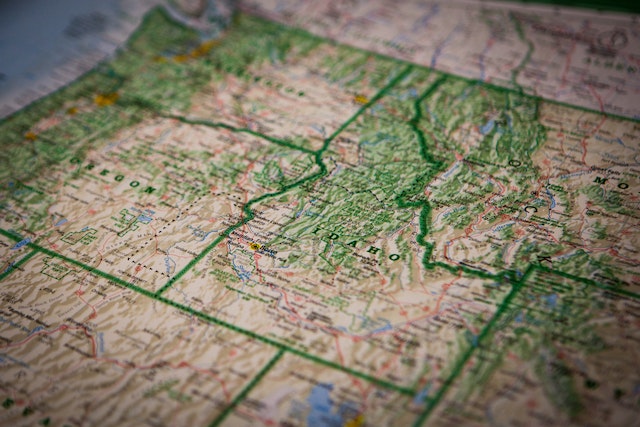
Weather Types of Maps
Weather maps are reliable tools for visualizing and interpreting meteorological data, providing significant insights into current and projected weather trends. Meteorologists, pilots, and the general public can use these types of maps to understand and prepare for anticipated weather and climatic changes.
There are different weather maps, each with its function in presenting various weather phenomena. They include:
- Surface Weather Maps
These maps represent meteorological conditions at the earth’s surface, including high and low-pressure systems, fronts, and isobars (lines of equal atmospheric pressure). Surface weather maps aid in identifying weather patterns, like areas of convergence and divergence, which might indicate the possibility of storms.
- Radar Maps
Radar maps detect and track precipitation using radar technology. They depict the magnitude, speed, and kind of precipitation, such as rain, snow, or hail. These maps aid forecasters in issuing timely warnings during severe weather events such as thunderstorms and hurricanes.
- Satellite Maps
Satellite maps use photos acquired by weather satellites to provide a bird’s-eye view of cloud cover and weather systems. These maps depict the extent of cloud formations, storm systems, and atmospheric occurrences. Satellite maps are especially effective for following large-scale weather patterns and observing the genesis and movement of tropical cyclones.
- Climatological Maps
Climatological maps show long-term average weather conditions, such as temperature and precipitation patterns. They aid meteorologists in understanding climatic patterns and changes and can be valuable in agricultural planning, water management, and climate research.
Overall, weather maps are vital for understanding and predicting weather trends. They allow meteorologists to evaluate and interpret data to provide accurate forecasts, determine potential hazards, and communicate weather conditions to the public. Meteorologists can acquire detailed insights into the complicated earth’s atmosphere processes using these maps.
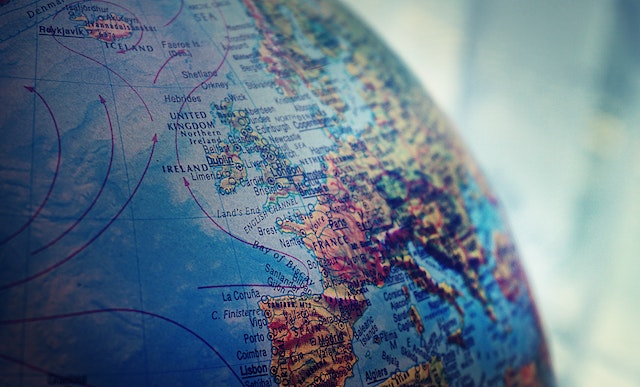
Nautical Types of Maps
Nautical maps, aka nautical charts, are specialized navigational maps that mariners use to navigate bodies of water safely. These types of maps contain precise information about coastal areas, sea depths, underwater dangers, navigation aids, and other vital elements for safe and efficient marine navigation. Here are some common nautical charts.
- Coastal Charts
Coastal charts emphasize navigable coastal areas such as ports, harbors, and neighboring waters. They provide precise information about coastlines, landmarks, buoys, beacons, and other navigational aids. Coastal maps also show water depths, shoals, and other dangers to assist mariners in navigating securely near the shore.
- Harbor Charts
Harbor charts are more detailed than coastal charts since they concentrate on the layout and features of a specific harbor or port. They provide precise information on channel depths, docking facilities, marinas, and other pertinent features to help sailors move within limited spaces.
- General Charts
General charts are used for open-water navigation and cover vast bodies of water such as oceans or seas. These types of maps illustrate shipping lanes, sea routes, international borders, and essential ports. General charts help plan long-distance voyages by providing an overview of a region’s nautical obstacles and opportunities.
- Electronic Navigation Charts (ENC)
ENC stands for electronic navigation charts. ENC charts benefit from dynamic updates, allowing mariners to access the most up-to-date information. Mariners use them for real-time navigation with Global Positioning System (GPS) receivers and Electronic Chart Display and Information Systems (ECDIS).
- Route Planning Charts
Route planning maps assist mariners in planning their voyages by presenting a summary of various nautical charts along a specified route. They enable the efficient assessment of potential dangers, selecting proper anchorages, and considering weather patterns and tide conditions along the planned itinerary.
Mapize: An Excellent Mapping Tool That Incorporates Features of Different Types of Maps
As we’ve discussed in this guide, there are many types of maps, each with its unique purpose and features. Geography maps show the topographic, political, and natural features like land and mountains of the earth’s surface. Weather maps show temperature and precipitation and forecast weather changes. Nautical maps show water depth, coastlines, and navigational aids to ensure safe water travel.
Online mapping tools help in visualizing and understanding complex patterns in various maps. A classic example is Mapize — a mapping application that unlocks the vast world of digital mapping. Users can simply explore and assess multiple earth regions because of its massive collection of map layers. Mapize delivers precise and up-to-date information at your fingertips, whether you need to examine geographical features, watch weather patterns, or navigate the seas. The tool’s user-friendly UI and comprehensive search options simplify locating specific areas and accessing pertinent data. Try Mapize out today, unlock the digital world of maps, and create your custom maps for free.

